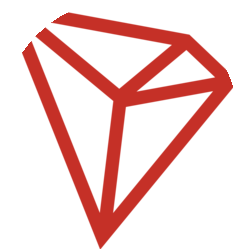-
Tether, the leading stablecoin issuer, continues to make waves in the crypto market, with $127 billion of its USDt tokens currently circulating globally.
-
Tether’s recent minting of $1 billion USDt on the Tron blockchain indicates growing trust and demand for stablecoins, particularly in regions affected by high transaction fees.
-
According to Arkham Intelligence, Tether executed this remarkable transaction with zero fees, showcasing the efficiency of the Tron network for stablecoin transfers.
This article explores Tether’s recent $1 billion minting on the Tron network, its implications for the stablecoin market, and the continuing growth of USDt supply.
The Impact of Tether’s $1 Billion Minting on the Crypto Market
Tether recently minted $1 billion USDt stablecoins on the Tron network, a move that underscores the increasing reliance on stablecoins for market liquidity. As of now, the total USDt supply on Tron is approximately $62.7 billion, making it a powerful player alongside Ethereum’s $62.9 billion. In a landscape characterized by transaction fees that can significantly impact payment processing, the Tron network offers a competitive edge due to its “no-fee” transfer capability.
Tron’s Attractive Network for Stablecoin Transactions
The Tron blockchain’s ability to facilitate zero-fee transactions is particularly beneficial for users in developing regions where the cost of remittances can greatly diminish the total value received. Tether’s strategic decision to utilize the Tron network reflects a broader trend toward efficient and affordable blockchain payment solutions. As noted by Tether CEO Paolo Ardoino, this minting was necessary to replenish USDt supply, indicating robust demand amidst fluctuating market conditions.
Stablecoin Market Dynamics: Understanding the Trends
The surge of stablecoins is an essential aspect of the cryptocurrency ecosystem, serving as a critical barometer for market sentiment. Traders often use the level of stablecoin issuance as an indicator of investor interest and market dynamics. A rise in newly minted stablecoins, as seen in Tether’s latest actions, typically signifies bullish market conditions, whereas decreases may indicate a cooling off from speculative trading.
Comparative Analysis: Tron vs. Ethereum in Stablecoin Dominance
Despite Ethereum’s larger ecosystem, Tron’s near parity in USDt supply speaks volumes about its effective integration within the crypto markets. The fact that Tron accounted for 37.9% of the total stablecoin market share as of August 2024 demonstrates its significant role in shaping the competitive landscape. In contrast, Ethereum held 55.7% of the market. This competitive dynamic may encourage innovation among established networks.
Future Outlook for Tether and Stablecoins
The continued minting of USDt reflects not only the growing proclivity for stablecoins but also Tether’s proactive measures in optimizing its supply chain. By maintaining an adequate reserve of authorized but unissued tokens, Tether is well-positioned to respond swiftly to market demands. This strategic maneuvering suggests a solid foundation as market scenarios continue to evolve.
Conclusion
Tether’s recent $1 billion minting on the Tron network emphasizes the critical role that stablecoins play in contemporary financial markets. As new thresholds are set in stablecoin issuance, understanding these movements will be instrumental for investors looking to navigate the intricate landscape of cryptocurrencies. The development of the Tron network as a cost-efficient alternative for stablecoin transactions may signify a shift in how digital currencies foster economic connections globally.
